A Cross Between a 2D Density Plot and a Scatter Plot.
ggpointdensity
Introduces geom_pointdensity(): A cross between a scatter plot and a 2D density plot.
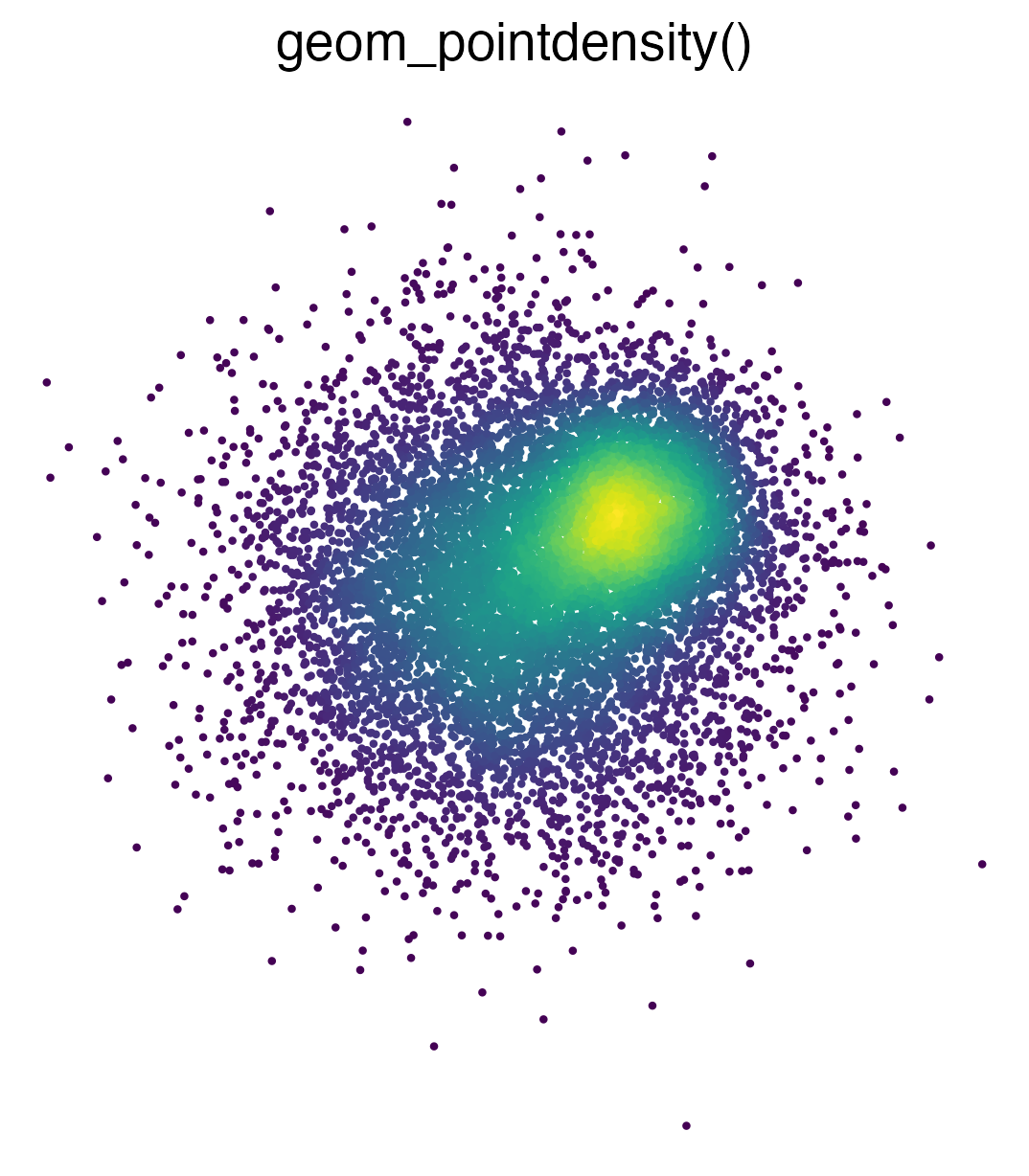
Installation
To install the package, type this command in R:
install.packages("ggpointdensity")
# Alternatively, you can install the latest
# development version from GitHub:
if (!requireNamespace("devtools", quietly = TRUE))
install.packages("devtools")
devtools::install_github("LKremer/ggpointdensity")
Motivation
There are several ways to visualize data points on a 2D coordinate system: If you have lots of data points on top of each other, geom_point() fails to give you an estimate of how many points are overlapping. geom_density2d() and geom_bin2d() solve this issue, but they make it impossible to investigate individual outlier points, which may be of interest.

geom_pointdensity() aims to solve this problem by combining the best of both worlds: individual points are colored by the number of neighboring points. This allows you to see the overall distribution, as well as individual points.
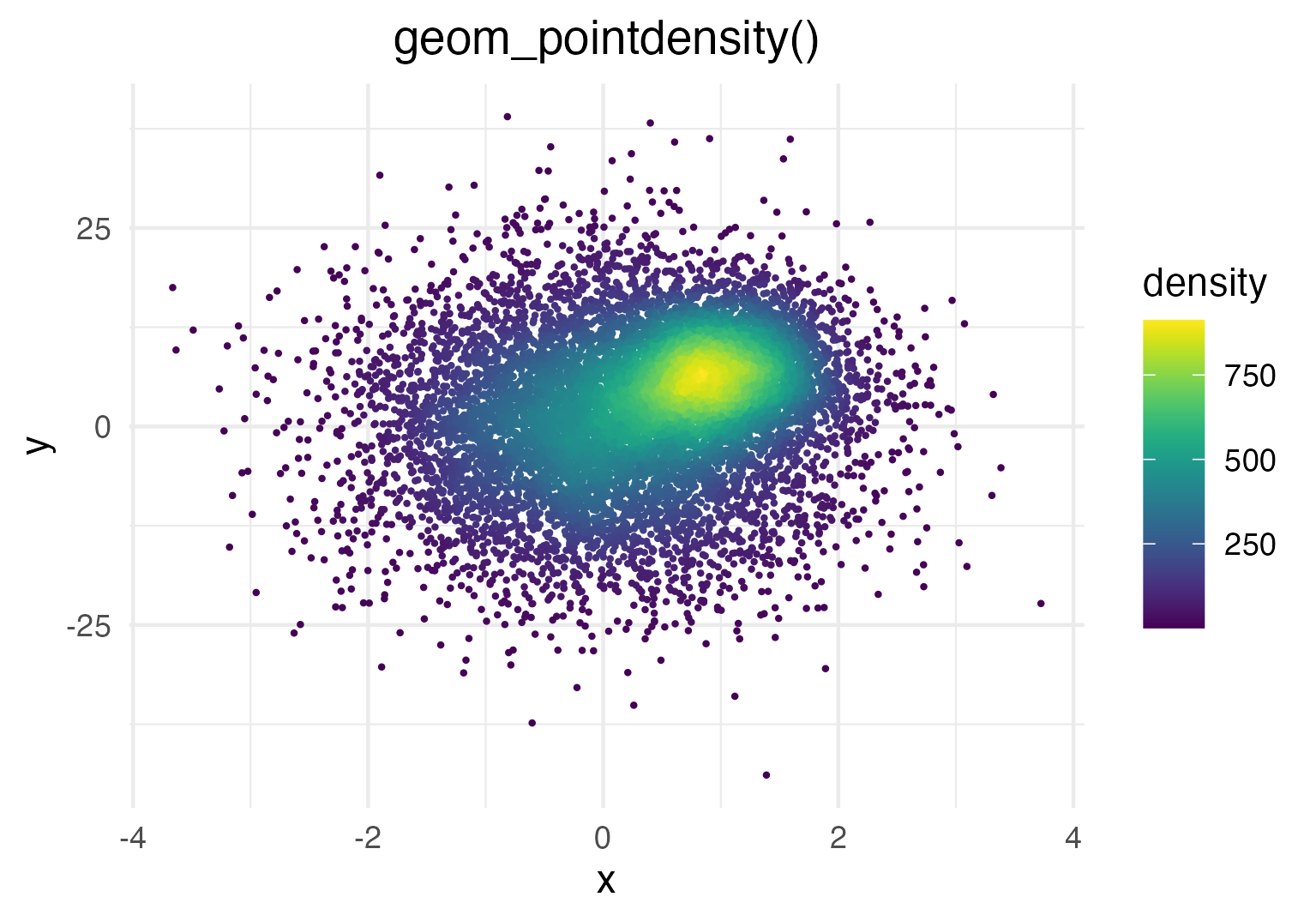
Changelog
Added method argument and renamed the n_neighbor stat to density. The available options are method="auto", method="default" and method="kde2d". default is the regular n_neighbor calculation as in the CRAN package. kde2d uses 2D kernel density estimation to estimate the point density (credits to @slowkow). This method is slower for few points, but faster for many (ca. >20k) points. By default, method="auto" picks either kde2d or default depending on the number of points.
Demo
Generate some toy data and visualize it with geom_pointdensity():
library(ggplot2)
library(dplyr)
library(viridis)
library(ggpointdensity)
dat <- bind_rows(
tibble(x = rnorm(7000, sd = 1),
y = rnorm(7000, sd = 10),
group = "foo"),
tibble(x = rnorm(3000, mean = 1, sd = .5),
y = rnorm(3000, mean = 7, sd = 5),
group = "bar"))
ggplot(data = dat, mapping = aes(x = x, y = y)) +
geom_pointdensity() +
scale_color_viridis()

Each point is colored according to the number of neighboring points. The distance threshold to consider two points as neighbors (smoothing bandwidth) can be adjusted with the adjust argument, where adjust = 0.5 means use half of the default bandwidth.
ggplot(data = dat, mapping = aes(x = x, y = y)) +
geom_pointdensity(adjust = .1) +
scale_color_viridis()
ggplot(data = dat, mapping = aes(x = x, y = y)) +
geom_pointdensity(adjust = 4) +
scale_color_viridis()
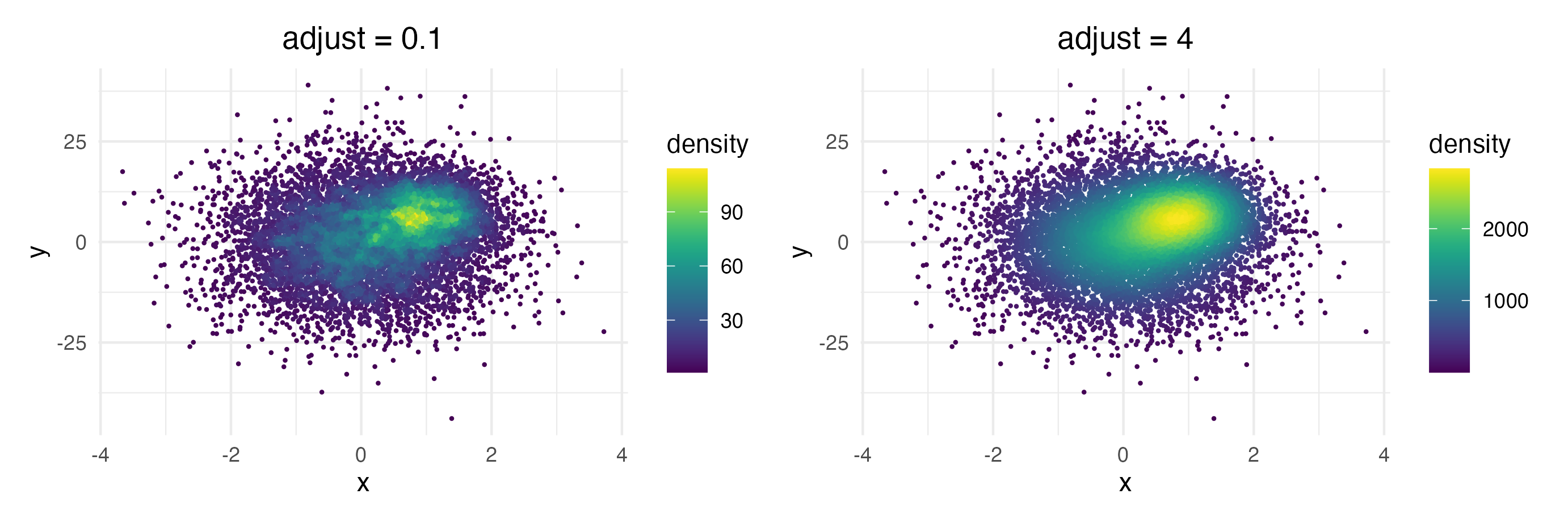
Of course you can combine the geom with standard ggplot2 features such as facets...
# Facetting by group
ggplot(data = dat, mapping = aes(x = x, y = y)) +
geom_pointdensity() +
scale_color_viridis() +
facet_wrap( ~ group)
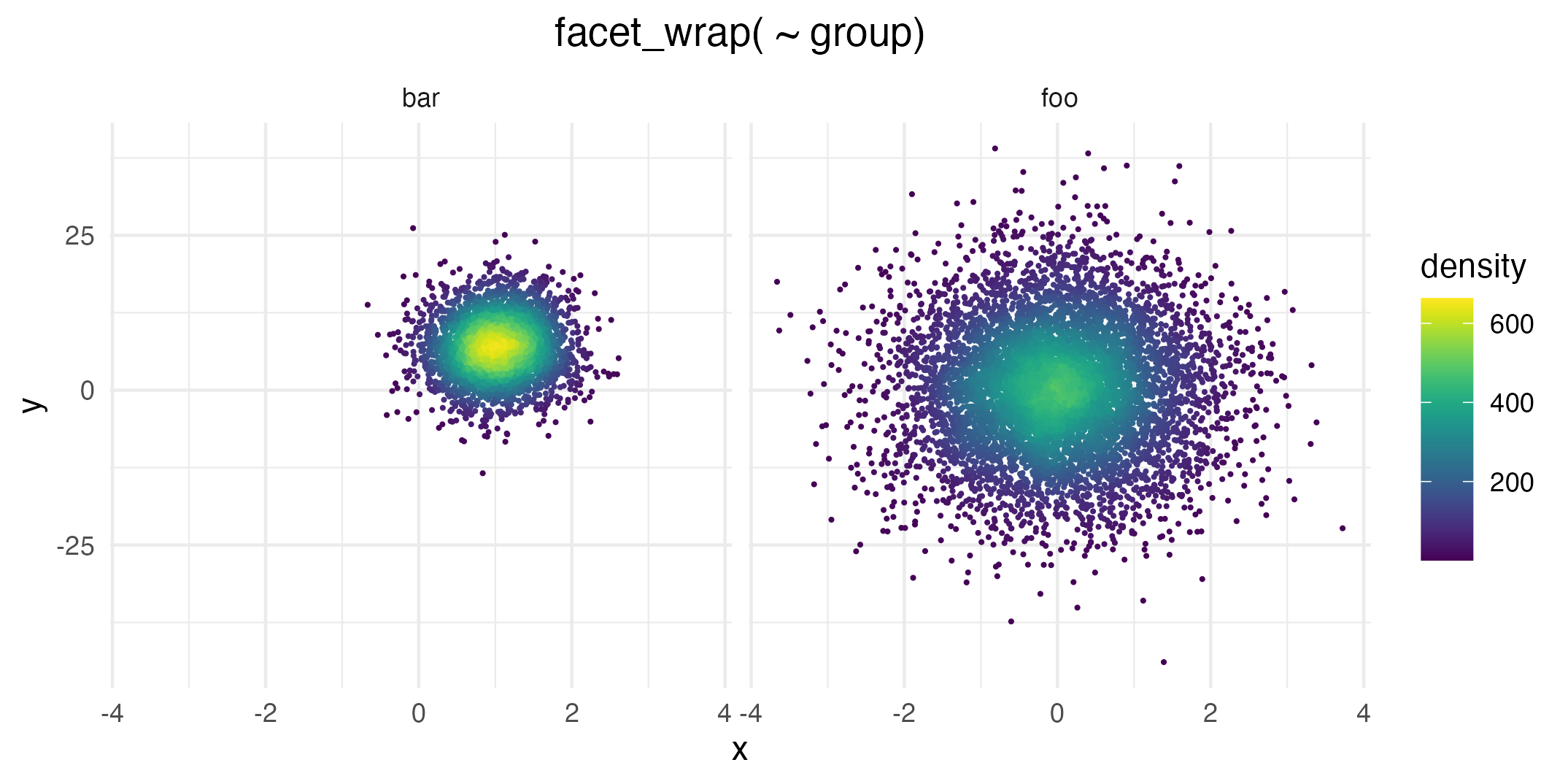
... or point shape and size:
dat_subset <- sample_frac(dat, .1) # smaller data set
ggplot(data = dat_subset, mapping = aes(x = x, y = y)) +
geom_pointdensity(size = 3, shape = 17) +
scale_color_viridis()
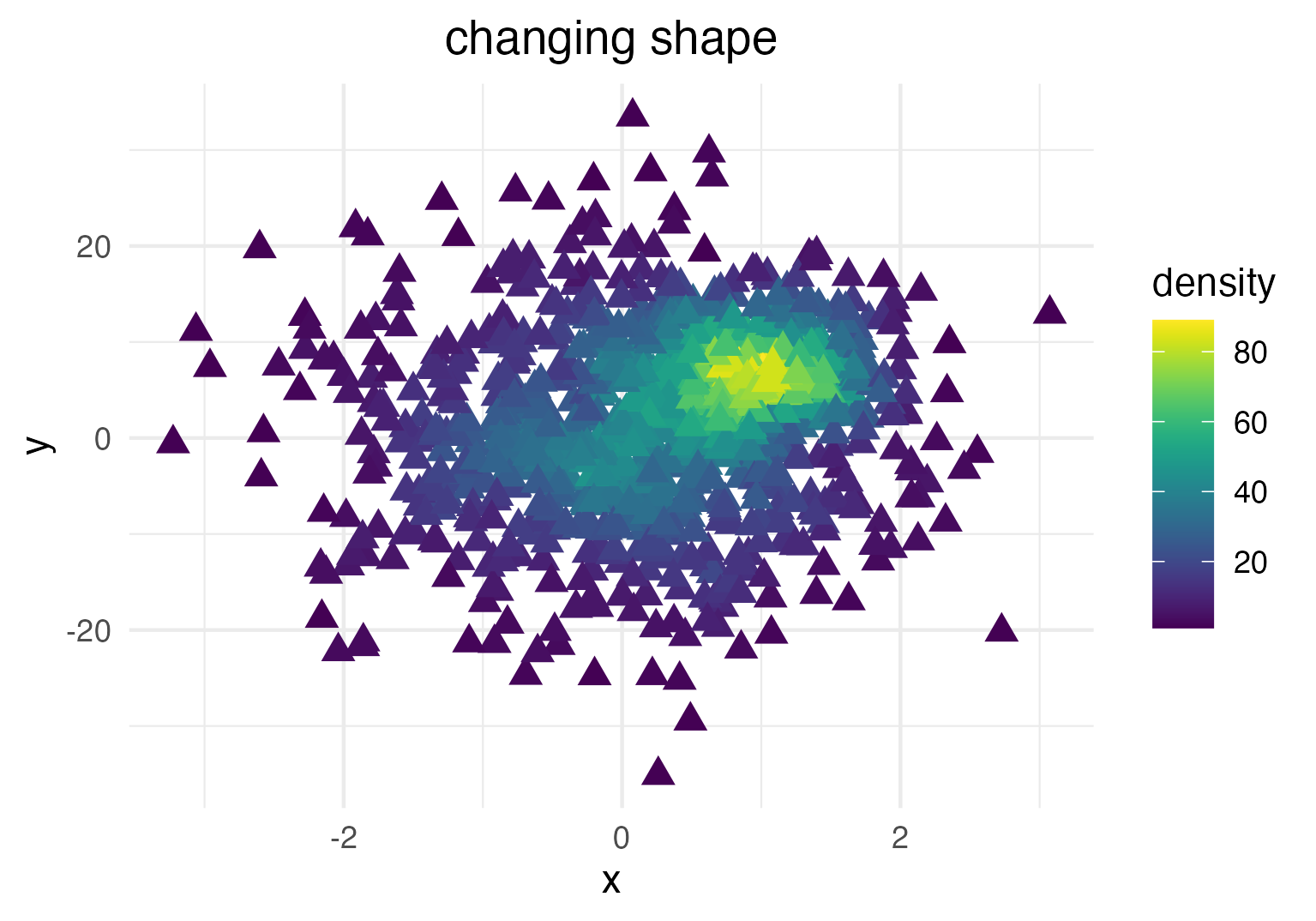
Zooming into the axis works as well, keep in mind that xlim() and ylim() change the density since they remove data points. It may be better to use coord_cartesian() instead.
ggplot(data = dat, mapping = aes(x = x, y = y)) +
geom_pointdensity() +
scale_color_viridis() +
xlim(c(-1, 3)) + ylim(c(-5, 15))
ggplot(data = dat, mapping = aes(x = x, y = y)) +
geom_pointdensity() +
scale_color_viridis() +
coord_cartesian(xlim = c(-1, 3), ylim = c(-5, 15))
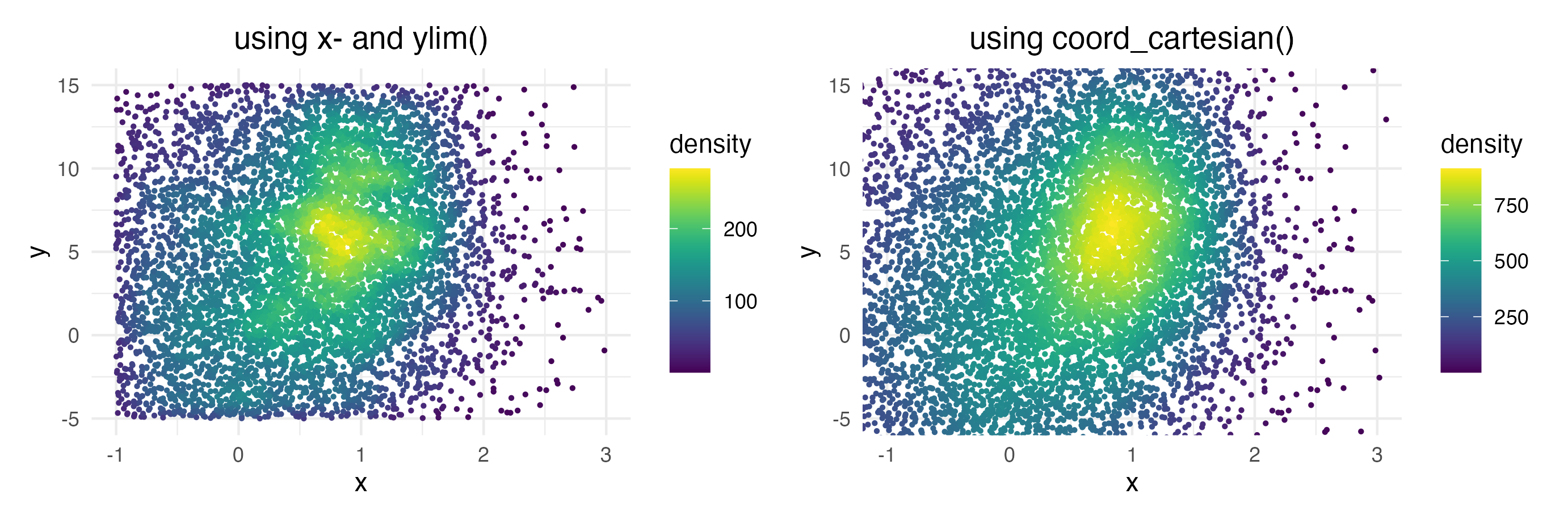
Authors
Lukas PM Kremer (@LPMKremer) and Simon Anders (@s_anders_m), 2019